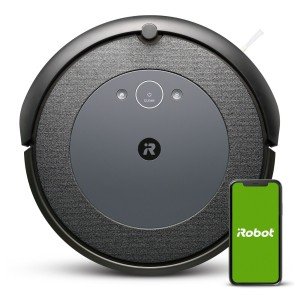The Rise of Robotic Vacuums: A Comprehensive Overview
In today's fast-paced world, technology is regularly evolving to make our lives easier, and the household cleaning segment has experienced one of the most noteworthy advancements: the robotic vacuum. This intelligent device not only saves time and energy however likewise makes sure a cleaner home environment with very little manual effort. This short article looks into the interesting evolution of robotic vacuums, how they work, their advantages and disadvantages, market patterns, and future instructions.

The Evolution of Robotic Vacuums
Robotic vacuums have made fantastic strides given that their beginning in the late 1990s. The first commercially readily available robotic vacuum was introduced in 1996, followed by various models, each designed with escalating elegance and functions. Here is a quick timeline of robotic vacuum evolution:
| Year | Occasion |
|---|---|
| 1996 | Launch of the very first robotic vacuum (Electrolux's Trilobite) |
| 2002 | iRobot Roomba is released, making robotics mainstream |
| 2010 | Introduction of advanced mapping and navigation functions |
| 2017 | Combination of AI and smart home compatibility |
| 2022 | Introduce of highly advanced designs featuring self-emptying dustbins |
How Robotic Vacuums Work
Robotic vacuums utilize a combination of sensing units, algorithms, and expert system to browse areas efficiently. Here's how they run:
-
Navigation: Most robotic vacuums use a series of sensing units to detect barriers and browse around furniture. Some high-end models include LIDAR (Light Detection and Ranging) innovation to develop comprehensive maps of the environment.
-
Cleaning Mechanisms: They are equipped with rotating brushes and suction systems to gather debris from numerous surfaces. Depending on the model, they can transition in between carpets and difficult floors perfectly.
-
Smart Features: Many contemporary robotic vacuums are Wi-Fi made it possible for, allowing users to control them from another location via a smartphone app. Features commonly include scheduling, mapping out cleaning paths, and combination with other smart home devices.
-
Self-Maintenance: High-end systems might include self-emptying abilities, where the robot can dock itself to a base that gathers dust and debris without human intervention.
Benefits of Robotic Vacuums
Robotic vacuums have garnered tremendous popularity, and for good reasons. Here are some of the most considerable advantages:
- Time-Saving: Automating the cleaning process allows users to take part in other significant activities.
- Efficient Cleaning: Regular cleaning can be quickly accomplished by arranging the robot to clean everyday or weekly, keeping dirt and irritants at workable levels.
- Compact Design: Their little size enables them to fit under furnishings and in hard-to-reach locations.
In spite of their benefits, robotic vacuums also feature constraints:
- Limited suction power: While they are effective for keeping clean floors, they might not match the deep cleaning of traditional vacuums.
- Battery life: Most designs need to return to their dock after a certain duration of usage.
- Preliminary expenses: High-quality robotic vacuums can be expensive, though rates have been decreasing with developments in innovation.
Existing Market Trends
The market for robotic vacuums is broadening rapidly. According to a current market research report, the international robotic vacuum market is anticipated to reach ₤ 7.2 billion by 2027, growing at a CAGR of 23.5%, driven by numerous elements:
Increased Adoption of Smart Home Devices
The increase of smart home innovation has actually encouraged consumers to incorporate robotic vacuums into their households. Numerous robotic vacuums work perfectly with home assistants like Amazon Alexa and Google Assistant, streamlining their operation.
Advances in Robotics and AI
As the technology behind robotic vacuums develops, models are being geared up with better navigation systems, AI algorithms for learning personal cleaning habits, and boosted functions for particular floor types.
Concentrate on Health and Hygiene
The heightened awareness of tidiness and health, especially due to recent international occasions, has driven customers to invest in devices that regularly get rid of dust, irritants, and animal hair from their homes.
Future Directions
As technology advances, robotic vacuums are expected to evolve even more, incorporating functions that increase their efficiency in households. Expected advancements consist of:
- Improved AI Learning: With developments in device learning, future models will be better at comprehending their environment and adapting to the needs of their owners.
- Multi-Purpose Design: Potential future designs may include functions for mopping, disinfecting, and air purification in addition to vacuuming.
- Sustainability: As eco-consciousness increases, producers are likely to focus on energy efficiency, recyclable products, and sustainable production practices.
Frequently Asked Questions About Robotic Vacuums
1. Can robotic vacuums vacuum on carpet?Yes, many robotic vacuums can transition in between various floor types, consisting of carpets and hard floors. 2. How typically ought to I run my robotic Self-charging vacuum?It depends
on your household's cleaning requirements, but lots of users
arrange their robotic vacuums to run everyday or every number of days. 3. Are robotic vacuums worth the investment?For lots of consumers, the time conserved and benefit offered by robotic vacuums makes them worthwhile,
specifically for busy homes. 4. Can I control my robotic vacuum remotely?Most modern robotic vacuums can be controlled via a mobile phone app, enabling scheduling and tracking from anywhere. 5. Do I still require a standard vacuum cleaner?While robotic vacuums efficiently manage everyday cleaning, a standard vacuum might still be necessary for deep cleans or hardermesses. The development of robotic vacuums shows a substantial leap in automating housework, integrating ingenious technology with user-friendly operation. As the trend toward smart homes continues and customer expectations progress, robotic vacuums will likely keep improving, supplying ever-greater benefit and performance in preserving tidy home. As property owners consider the potential benefits and constraints of these devices, it is clear that robotic vacuums have solidified their reputation as indispensable tools in contemporary home management.
